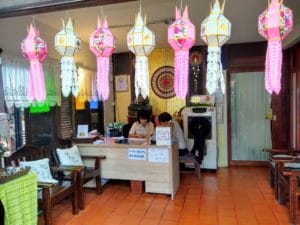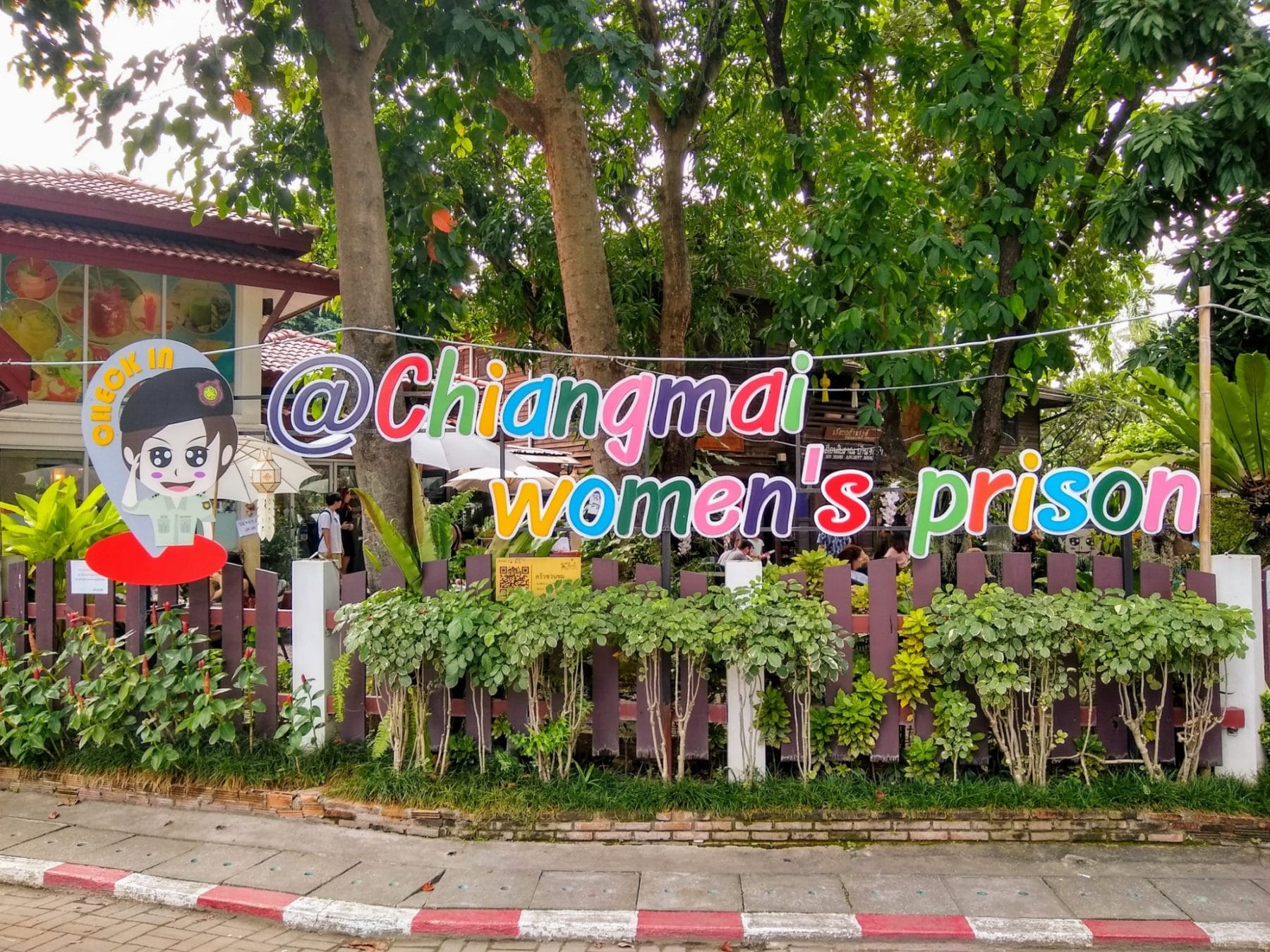Natauboo Jama started selling methamphetamine in northern Thailand after her second child was born. Known locally as yaba, it is sold mixed in a three-to-one ratio of caffeine to meth and is popular among small-scale farmers who need stamina to work long hours.
Jama was once a farmer herself. But plunging food prices and debt-slavery to agricultural corporations that sell farm equipment and seeds forced her to seek an alternative income. By selling yaba, she made enough money to support her family.
Like many poor farmers across the world, Jama was trapped in a dangerous intersection of economic and drug policies. Free trade agreements and competition from giant agro-businesses drive many small farmers to use drugs for increased productivity, or to sell them for survival. But the governments behind these economic policies also criminalize the use and sale of drugs, filling their prisons with the poor.
“We slept 50 women to a room on mats on the floor.”
At age 25, Jama was caught and thrown into an overcrowded prison in Chiang Mai, the largest city in northern Thailand. She was incarcerated for 10 years.
I met her, now 38, at her current workplace: the Women’s Massage Center for Ex-Prisoners in downtown Chiang Mai. Speaking through an interpreter, she described her imprisonment.
“We slept 50 women to a room on mats on the floor,” she said. “Sometimes the food was rotten.”
She spoke of the hardships of separation from her family and trouble finding work after release. Many women, she said, go back to selling yaba because no one will hire people with criminal records.
A Global Trend
Stories like Jama’s are increasingly common. Worldwide, men still make up 93 percent of the prison population. But in the past two decades, the population of women prisoners has increased at more than double the rate of men—53 percent and 20 percent, respectively. (It’s important to note that many countries’ statistics, on which such international figures are based, refer only to cisgender women, or leave it unclear whether transgender women are included.)
Most of the increase is accounted for by low-level, nonviolent drug-law violations.
These increases are most pronounced in Latin America and Southeast Asia, regions that already suffer from severe prison overcrowding and inhumane conditions. Some countries, such as El Salvador, have seen their population of women prisoners rise as much as ten-fold.
Most of the increase in arrests of women is accounted for by low-level, nonviolent drug-law violations. In Brazil, Peru, Venezuela and the Philippines, over 60 percent of women in prison are incarcerated for a drug offense. In Thailand, that number is 82 percent.
No comprehensive study exists on the reasons behind the increase in women’s incarceration on such charges. But I asked Gloria Lai, regional director for Asia at the International Drug Policy Consortium, about likely factors.
“It could be enhanced law enforcement operations or new strategies from people who operate the supply chain,” she suggested. “It could also be that more women are relied upon as the sole breadwinner of a family now, and there is pressure to take care of children and elderly dependents.”
A Controversial Massage Program
The main Chiang Mai women’s prison houses a controversial massage school. Each day, women with three-and-a-half years or less of their sentence remaining are bused into an older prison in downtown Chiang Mai where they provide massages to paying tourists.
Visiting this downtown facility was one of the most bizarre experiences of my career. The prison courtyard is a lush garden of gurgling fountains, orchids draped over tree trunks and shaded café tables. At the entrance stands a heart-shaped wicker porch swing under a cheerful sign that reads “Welcome to prison.”

People walk around freely. Some prisoners in powder blue jumpsuits take care of the grounds. Others, in beige uniforms, usher tourists into massage rooms. A wooden fence surrounds the complex, but there are no gates.
Tourists enjoy lunch at wicker tables as flute music drifts from speakers hidden in the foliage. The only evidence of prison—besides the trippy sign—is the presence of a couple of bored-looking corrections officers who sit behind a desk near the massage parlor entrance.

My feelings about the place were conflicted. On the one hand, the beauty and relaxed atmosphere of the courtyard seemed preferable to the steel bars and over-crowded conditions of the regular prison, where these women still sleep at night.
When I asked Jama, who worked here while she was incarcerated, about her experience, she said that most women are anxious to work at the massage parlor because it provides them with job skills to use after release.
This echoes a message I have often heard from incarcerated people in the United States. Prison conditions can be so boring and abusive that even working for a pittance for the very system that chains them can seem preferable to doing nothing. And yet, the idea of “job training” in prison clashes with the realities of a market that routinely denies employment to anyone with a criminal record.
I don’t like how the massages are marketed. In some gag-worthy online reviews, bloggers crow about the exhilaration of being close to criminals.
I felt somewhat better about the Chiang Mai prison when I learned that the massage therapists receive 50 percent of net profits—far superior to the pennies per hour that US prisoners make—but I don’t like how the massages are marketed.
In some gag-worthy online reviews, bloggers crow about the exhilaration of being close to criminals. Prison massage parlors are trendy in Thailand, perhaps designed more to excite tourists than to benefit incarcerated people.
What’s more, in 2016 Thailand passed a law prohibiting formerly incarcerated women from working in massage parlors until one year after release, which throws the government’s commitment to reform into serious question.
I wasn’t allowed to speak to anyone inside the prison, but by wandering past nearby shops, I stumbled upon the Women’s Massage Center for Ex-Prisoners. Here I met Jama.
I also met Thunyanun Yajom, who spent 17 years as a correctional officer in the Chiang Mai prison. Yajom supervised the training for the prison massage center, but grew frustrated because even very skilled women were still having trouble finding work after release.
“They trained well, but after they got out nobody gave them work, so they go to prison again,” she told me. In 2014, Yajom quit the prison to start her own massage center, which now has five locations and over 50 employees—all formerly incarcerated women.

Thunyanun Yajom
The Bangkok Rules—And Their Flaws
In 2010 the United Nations formally recognized the social repercussions of imprisoning women—who, globally, are much more likely than men to be caregivers—by voting to adopt the Bangkok Rules, a set of resolutions aimed at improving standards for incarcerated women and their children.
The impetus came from Thai Princess Bajrakitiyabha, who became involved in women’s incarceration after witnessing inhumane conditions in a Bangkok prison in 2001. In 2006, she helped launch a project in Thailand to assist women with emotional support, healthcare and job training both during and after prison. In 2008, she began advocating for global policy change.
The resulting set of 70 Rules for best practices in women’s prisons cover everything from reproductive healthcare to non-invasive searches, prohibition of shackles during childbirth, protection from sexual violence and prison nurseries.
Critics rightly point out that the healthcare recommendations and special considerations under the Bangkok Rules apply almost exclusively to pregnant women and mothers. No mention is made of non-reproductive healthcare such as menopause, breast cancer or uterine cancer.
It does seem that the architects of the Bangkok Rules have noticed their mistake.
Nor is there any mention of the specific needs of trans women, such as access to hormone therapy and gender-appropriate health exams and housing. Given the Rules’ origin in Thai advocacy, this omission is glaring. Thailand’s capital, Bangkok, is considered a global mecca for trans women, and the country ranks second in the world for gender reassignment surgery.
It does seem that the architects of the Bangkok Rules have noticed their mistake. In 2018, Princess Bajrakitiyabha teamed up with the Thai Ministry of Justice and the United Nations Development Program (UNDP) to review conditions for transgender prisoners in Thailand, whose population has shot up 181 percent since 2006. Thai transgender prisoners are routinely denied hormone therapy, forbidden from using bras or chest binders, housed in prisons that don’t reflect their gender, and subjected to humiliating searches in front of cisgender prisoners.
As a result of the review, the UNDP is currently creating new guidelines for incarcerated transgender women and men.
Not all countries have embraced the Bangkok Rules, even in their flawed present form. Several US states still shackle women during childbirth—though the practice was banned this year at the federal level—and the majority of incarcerated people who give birth are immediately separated from their children.
Positive Efforts, But Not Sufficient
Even Thailand doesn’t implement its own policies in every prison, though the country has set up certain “model prisons” that attempt to provide safer and more humane conditions for cisgender women. One of these prisons is the Chiang Mai Woman Correctional Institution, where Jama served her sentence.
Yajom said that after the Bangkok Rules were adopted, conditions at the women’s prison improved somewhat. Internet was provided for video chats with lawyers and family. The prison developed a nursery where women can care for their infants for a year before the child is placed with relatives or foster care. There are training classes to teach skills like textiles, weaving and general education.
But improved conditions inside a prison do not necessarily translate into a better environment outside it. The International Drug Policy Consortium (IDPC) has ongoing projects around the world that aim to prevent women’s imprisonment and improve conditions for incarcerated and formerly incarcerated women. Gloria Lai is working on one such project across Thailand, Indonesia and the Philippines.
“We try to mobilize allies who work on women’s rights and prison issues to advocate for reforms such as decriminalization of drugs for personal use, but it is up to the countries to decide how they want to respond,” said Lai. “We are trying to show the human side of the women who end up in prison. That gets people involved.”
IDPC recommends civil society engagement with governments to discuss the adoption of appropriate sentencing policies. They encourage the use of alternatives to incarceration and promote the inclusion of formerly incarcerated women so that their voices are heard in policy processes that affect them.
Significant change will only come if we stop criminalizing drugs, and fight for gender and social equality.
These efforts are positive, but to me, they are not sufficient. Most programs aimed at reducing incarceration or helping formerly incarcerated people find housing and work are mere Band-aids on larger problems: the drug war and social inequalities.
Women’s incarceration rates are rising not because of increases in crime or drug use, but because of devastating economic policies, over-policing and multiple layers of stigma and discrimination. Women around the world are trapped into hard choices. Significant change will only come if we stop criminalizing drugs, fight for gender and social equality, and free people to respond to life’s challenges as they consider best.
All photos by Tessie Castillo.





Show Comments